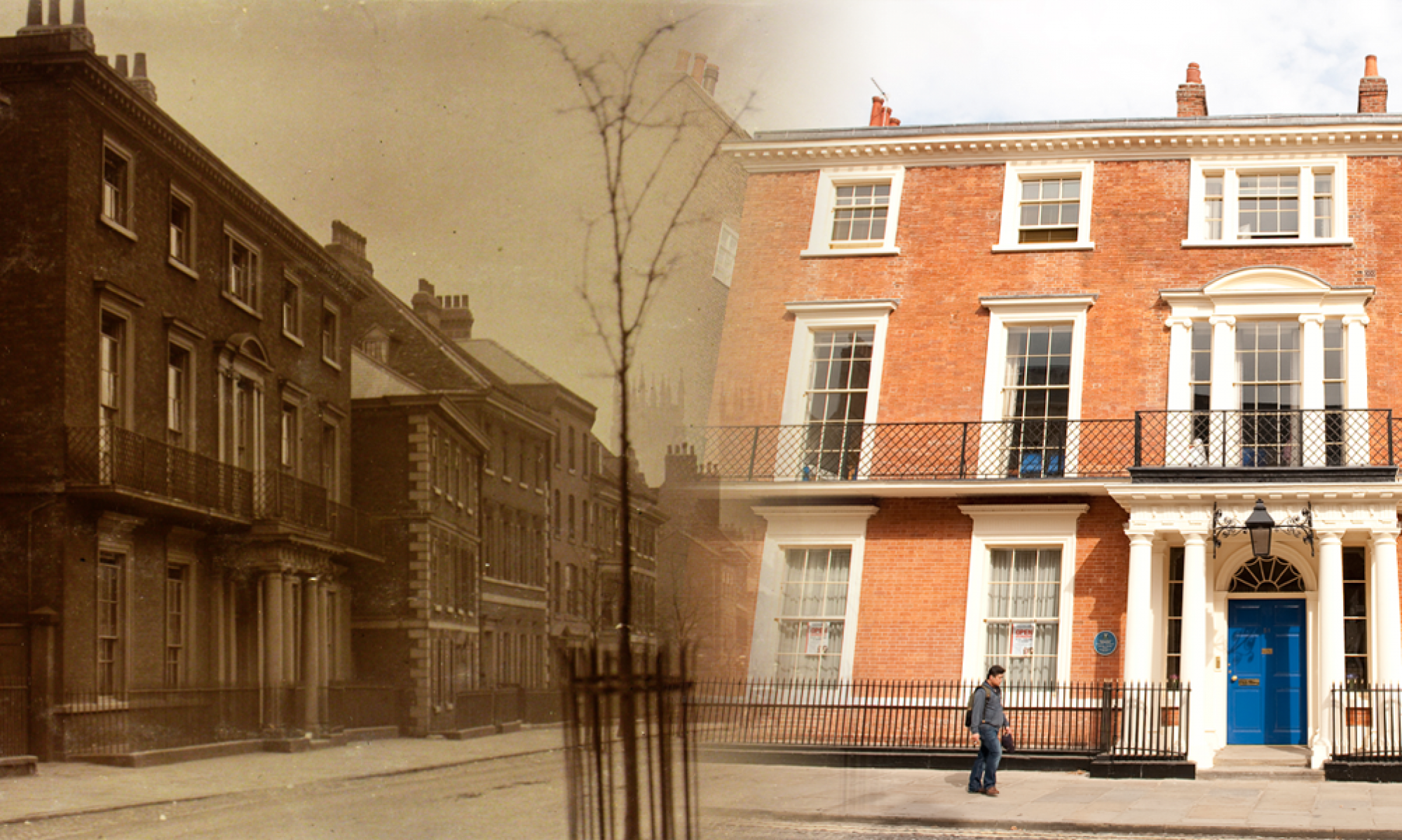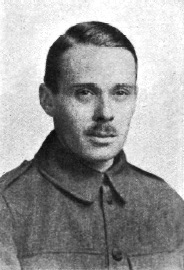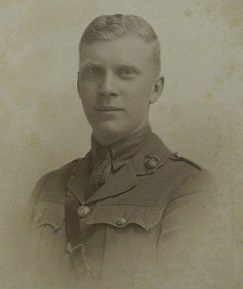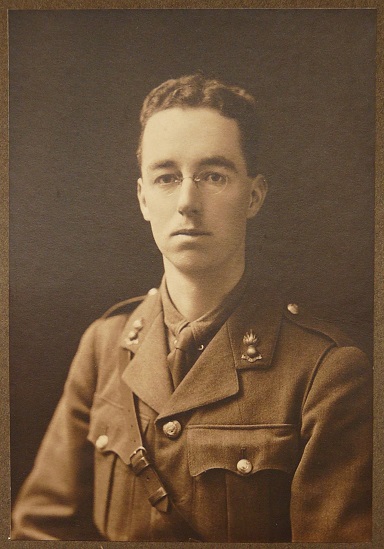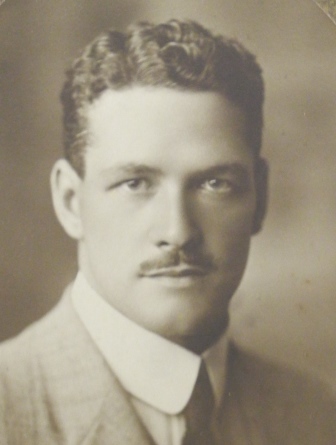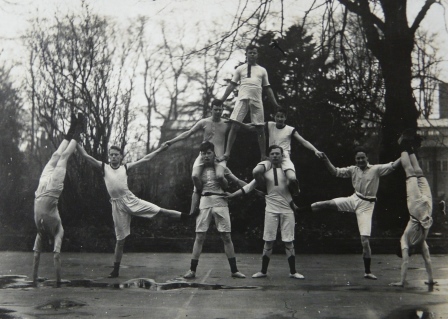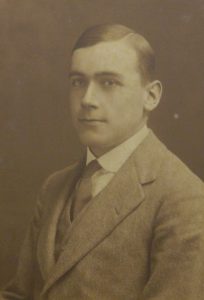Gordon Allison of Newcastle-upon-Tyne was in the King George’s Own Gurkha Rifles and was killed in action on 8th June 1919 in India (now Pakistan), aged 20 years.
He was born in 1898 and attended Bootham School from 1914 to 1916.
Gordon played a lot of cricket at Bootham. The school magazine, “Bootham”, of December 1914 tells us that in the 1914 cricket season he played in the Second XI, and he was a bowler. For example, on 11th July, against St. Thomas’, he took five wickets for 36 runs.
“SECOND XI. AVERAGES.
Bowlers. Overs. Maidens. Runs. Wickets. Average.
Allison 12 2 36 5 7’20 “
Gordon also played football. “Bootham” of March 1915 gives Football Results:
“FIRST BOYS’ XI.
Nov. 4, v. EDWARD VII. SCHOOL, at Home. Won, 6—2.
“…during the second half our forwards had matters very much their own way, scoring several times. Radley was responsible for three of our goals, Allison, Hart and Wilson also scoring.” “
The next issue of “Bootham” , June 1915, contains Football Notes (By the Captain):
“ALLISON, G.—Is a very clever forward on a dry ground, dribbling well and passing effectively. On our ground, which is so often wet and heavy, he is too light. Even so he is rather too easily discouraged, and does not know how to “get in” properly.”
By 1915, Gordon had progressed to the cricket First XI. For example, “Bootham” of December 1915 tells us:
“Cricket Season 1915
FIRST XI. (BOYS’) RESULTS.
June 16, v. BRIDLINGTON G.S., Home. Won, 180—103.
Allison took four wickets for 6 runs.
July 13, v. ST. PETER’S, Away. Won, 167—68.
Allison made 55, skilfully hitting a lob bowler to leg.”
“Bootham” of March 1916 contains the football report of the season 1915-16 and has Notes on the Team by the Captain:
“ALLISON, G., has increased greatly in general effectiveness since last season. With added weight and determination he has been able to exercise his clever dribbling to good purpose. Nor does he forget to pass, but feeds his neighbours well. But he will be remembered for his heading, which he has developed into an art.”
Also in the issue, the Eighty-Second Annual Report of Bootham School Natural History, Literary & Polytechnic Society January, 1916. in the Workshop Report we read:
“The show has this year exhibited a great deal of careful work by many competitors. …… The forge has also done well, two firescreens by J. L. Pumphrey and J. Hamilton being shown. A plant-stand by G. Allison and some lathe-tools were also made.”
Gordon won a Workshop prize for Bent Ironwork.
“Bootham” of July 1916 contains the report of the school Athletics competition. Gordon did well in his races and the report tells us that “Smith also ran well, and Allison’s Quarter and Half were excellent performances.” The results include:
“SENIOR.
440 Yards: 1. G. Allison 58 2/5 sec
880 Yards: 1. G. Allison 2 min. 15 4/5 sec”
This issue also contains the report of the Football Bedroom competition. Gordon played for Bedroom XI:
“No. XI. showed themselves easily masters of VI. and won with plenty to spare. Graham worked hard, but could not kick far enough to keep out his assailants. Hamilton scored twice, but his play was too clumsy, whilst Allison’s skilled footwork made him the best man on the field.
The Final, between XI. and XII., took place in an abundance of mud, but it was a delightfully clean game nevertheless, and as keen as mustard. Though some of those on the winning side were thoroughly clumsy, there was nothing approaching a foul. Allison’s judgment was excellent and his footwork extremely clever, whilst Hamilton took all the advantage of his opportunities, and has never done better. ….. It was a splendid game and a richly deserved victory.
Bedroom XI won the match and Gordon Allison (Capt.) scored 3 goals. “
We see in the October 1916 issue of “Bootham” that Gordon was still playing cricket:
“ST. PETER’S, May 27, Away. Won, 234 for 9 (declared)—50. Rarely have we batted to such advantage. ……. Smith got four for 25 and Allison five for 18.”
“Notes on The Team, By the Captain.
ALLISON, G.—Has come on well in bowling in course of season, and batting improved too; more sting in his bowling, and more straightness and power in his strokes, but still inclined to slice, and to draw away, and swipe wildly at leg stump balls. A good field in the slips.”
This issue also contains Gordon’s “Bene Decessit” entry:
“G. ALLISON was a clever and tricky athlete. At football he obtained his 1st Masters’ colours, and his wonderful headwork may be classed as an art. At cricket he was a clever bowler and steady batsman, winning his 1st Masters’ colours two seasons ago. He served on both Games Committees, played an excellent game of fives, and was a supple gymnast. In athletics he did some brilliant times at the quarter and half mile races. In academic work he passed the London Matriculation with Honours. Allison leaves from the Upper Senior.”
and
“Examination Results. Midsummer, 1916.
Senior School Examination. Matriculation Standard. Honours.
Allison, a., e., g
(a= Distinction in English, b in Mathematics, c in Chemistry, e in French, g in History.)”
After Bootham, Gordon went on to Armstrong College, Newcastle upon Tyne. He returned to school in 1917 to play cricket for the Old Boys against the school team.
In “Bootham” of December 1917, we read, in the “Across the Months” section:
“GORDON ALLISON (1914-16) is at the Cadet College, Madras.”
The May 1918 issue of “Bootham” lists Gordon under “Old York Scholars serving in the Navy and Army.”:
“Allison, G., Cadet College, Madras.”
In the July 1918 issue of “Bootham”, in “Across the Months”, we read:
“GORDON ALLISON (1914-16) writes from India acknowledging the 1917 card. As assistant adjutant he trains recruits and plays soccer with Gurkhas, who show keenness and lack of funk, especially when tackling big officers.”
We next hear of Gordon in “Bootham” of December 1918:
“GORDON ALLISON (1914-16) is at present at Fort Sandeman, Baluchistan, training Gurhka regiments. They have had ” flu ” badly, 600 out of the battalion down with it.”
Then in “Bootham” August 1919, under “Deaths” we read:
“ALLISON.—On the 8th June, 1919, killed in action in India, Gordon Allison (1914-16), of Newcastle-on-Tyne, aged 20 years.”
Lieutenant Gordon Allison of the st King George’s Own Gurkha Rifles is buried at the Political Agent’s Garden, Fort Sandeman, Baluchistan in modern-day Pakistan.
His name is engraved on the Delhi Memorial (India Gate) in New Delhi.
